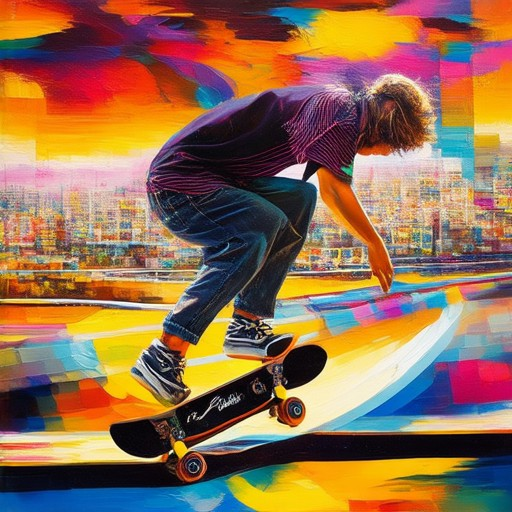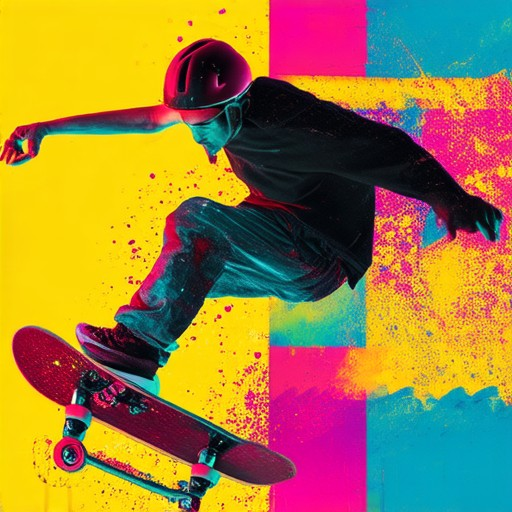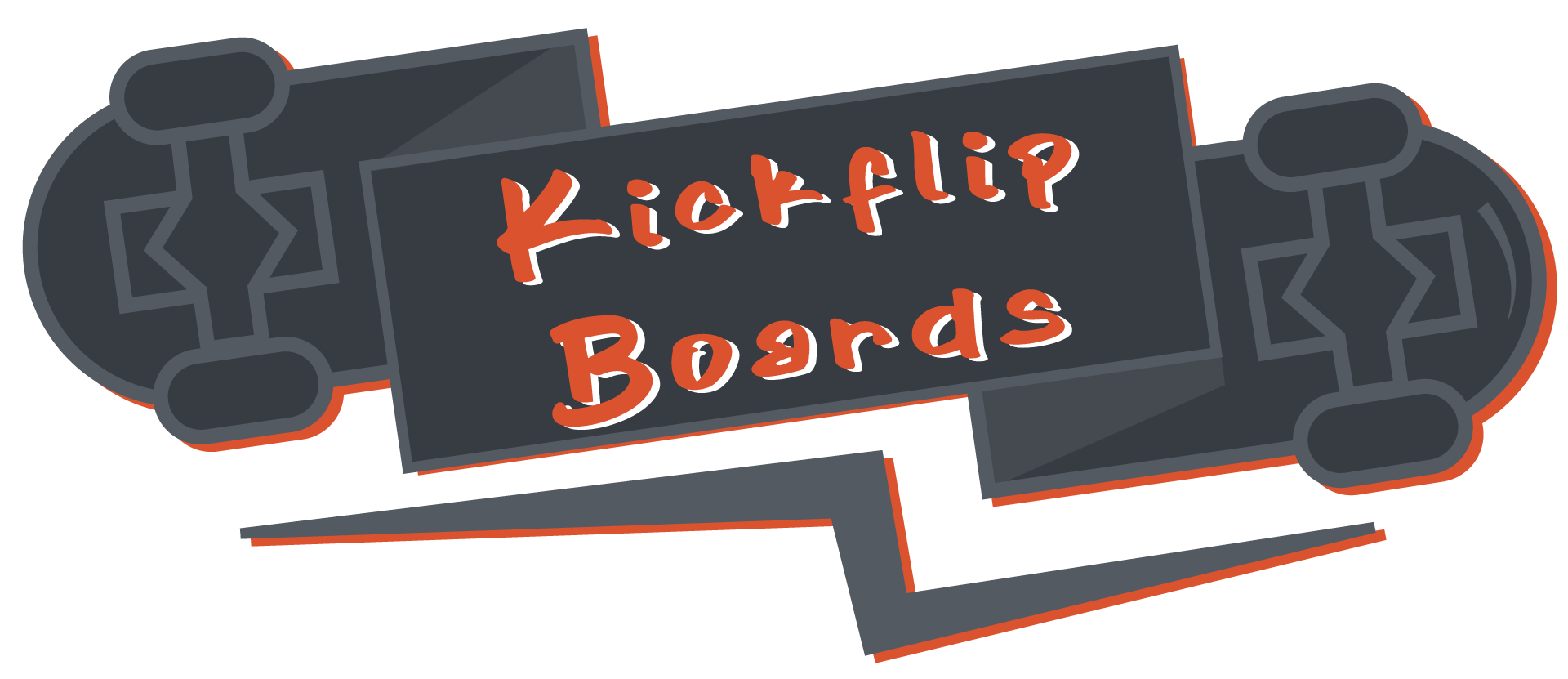Mastering the art of safe bailing on a skateboard is essential for every rider looking to improve their skills and stay upright. Whether you’re new to the sport or aiming to perfect your tricks, understanding proper bailing techniques is crucial for both style and safety. From navigating tricky landings to avoiding common pitfalls, this guide will walk you through everything you need to know to bail confidently and safely on a skateboard. Discover expert tips, common mistakes to avoid, and strategies to maintain balance during those high-flying moments. Whether you’re learning the basics or advancing your skills, this comprehensive overview will help you master the art of safe bailing and enjoy a more enjoyable and accident-free skateboarding experience.
Key Takeaways
– Master safe bailing with confidence: Approach tricks with a calm mindset and assess the environment to react smoothly during falls.
– Ensure stability: Maintain balance by keeping your feet shoulder-width apart and staying low to the ground for better control.
– Perfect your timing: Develop consistent pop/ollie execution to send the board airborne and catch it mid-air effectively.
– Maintain body control: Use wide hand placement and engage core muscles to stay balanced and upright.
– Land safely and keep moving: Land softly with bent knees and quickly stand up to maintain momentum after a bail.
– Build muscle memory: Practice regularly on safe surfaces to refine your technique and improve reflexes.
– Protect yourself: Always wear knee pads and wrist guards to minimize injury risks during bails.
– Learn from experts: Seek feedback from experienced skaters and watch instructional videos to enhance your skills.
– Progress steadily: Start with simpler tricks and work your way up to more challenging maneuvers.
– Explore resources: Visit our safety guidelines and discover top skateboard brands for the best equipment and advice.

How to Properly Bail on a Skateboard
Bailing on a skateboard is a common occurrence, especially when dealing with street features like stairs, gaps, or ledges. While it’s important to focus on preventing falls, knowing how to handle yourself when you bail is crucial for minimizing injuries and getting back on your feet quickly. Here’s a step-by-step guide to help you navigate a bail effectively:
- Maintain Balance:** Keep your eyes forward and stay focused on your landing spot. A momentary distraction can lead to loss of balance.
- Tuck Your Chin:** Protect your head by tucking your chin towards your chest to avoid impacts that could cause concussions or other injuries.
- Bend Your Knees:** As you fall, bend your elbows and keep your knees bent to absorb the impact and reduce the force of the fall.
- Roll Away Over Your Shoulder:** Once you hit the ground, roll onto your side and swing your legs forward to push yourself up. This motion is often referred to as a “roll away.”
- Get Up Quickly:** As soon as you’re able, scramble to your feet to avoid being hit by your skateboard. Practice this movement to make it second nature.
### Tips for Preventing Falls:
- Practice Balance:** Work on your stance and foot placement to improve stability.
- Approach with Caution:** Take your time when navigating unfamiliar spots or difficult features.
- Wear Protective Gear:** Invest in knee pads, elbow pads, and a helmet to cushion impacts and protect vital areas.
### Common Scenarios:
- Bailing Down Stairs: Land on your feet first and bend your knees to absorb the impact. Roll away quickly to avoid sliding down.
- Bailing Over Gaps: Aim to land on your feet and roll away to preserve momentum.
- Bailing on Ledges: Approach with a slower pace and focus on maintaining control.
Remember, bailing is part of skateboarding, and knowing how to handle it safely will help you continue riding and improving your skills. With practice, you’ll become more comfortable navigating various surfaces and situations on your board.
How to Safely Fall on a Skateboard
Falling on a skateboard can be intimidating, but with the right preparation and technique, you can minimize risks and handle yourself safely. Here’s a step-by-step guide to falling properly:
- Protect Yourself First: Tuck your arms close to your chest to shield your head and neck from impact.
- Roll Away Quickly: After hitting the ground, roll onto your side using your legs to push off the ground. Aim to keep your feet pointed in the direction you want to move to maintain control.
- Use the Non-Stick Side: Ensure the wheels of your skateboard are on the non-stick side to facilitate smoother sliding and prevent the board from sticking to the surface.
- Stay Calm and Loose: Maintain composure to avoid panic-induced movements. Keep your body relaxed to allow for easier rolling.
- Avoid Crossing Your Legs: Crossed legs can trap the skateboard, causing difficulty in movement. Keep your legs straight and use them to push off the ground.
- Practice on Smooth Surfaces: Opt for surfaces like asphalt or concrete to reduce friction and improve rolling efficiency. Practice at a skatepark for consistent conditions.
By following these steps, you can enhance your safety and confidence when falling on a skateboard. Remember, practice is key, so spend time honing your technique and observing experienced skateboarders to refine your form.

Has anyone landed a 1080 on a skateboard?
A 12-year-old skateboarder achieved history in 2019 by landing the first 1080-degree kickflip in a competition. The young athlete, Lucas Padua from Brazil, who now resides in Southern California, successfully executed the groundbreaking trick during the Vans Park Series event in San Francisco.
- Lucas Padua, a 12-year-old skateboarder from Brazil, landed the first 1080-degree kickflip in a competition in 2019.
- The historic trick was performed during the Vans Park Series event held in San Francisco.
- Padua’s achievement came nearly two decades after Tony Hawk made history with the first 900-degree kickflip in competition.
- Lucas’s success marked a significant milestone in skateboarding, showcasing incredible skill and precision.
If you’re interested in learning more about this incredible feat, check out Lucas Padua’s YouTube channel for the full video of his historic 1080 kickflip:
Lucas Padua’s YouTube Channel

How Do Posers Hold Skateboards?
<p(Poser Holding Techniques)
Posers typically hold skateboards in a manner that emphasizes style over functionality, often mimicking advanced techniques without mastering them. Here are the key aspects:
- Stance and Foot Position: Posers often adopt a standard skateboard stance but may keep their feet too far forward or too close to the nose, making it difficult to maintain balance.
- Grip and Balance: They tend to hold the board with a death grip, using excessive force to compensate for poor balance. This can lead to visible tension and instability.
- Board Setup: Posers may opt for popular deck models and trucks that look cool rather than those suited for their skill level, affecting ride quality.
- Weight Distribution: Their weight distribution is often uneven, causing the board to wobble more than it should.
- Clothing and Accessories: They frequently wear baggy clothes and use accessories like belts to create a “skater” image, sometimes affecting how they hold the board.
- Trick Execution: Posers may attempt basic tricks like ollies or kickflips but struggle, relying on the board’s setup to make it seem easier than it is.
Overall, posers focus on appearances, often prioritizing how the board looks over how effectively they can control it. This approach contrasts with experienced skateboarders who have refined techniques for both style and functionality.
How to Bail Safely on a Skateboard
Bailing safely on a skateboard is a fundamental skill that every rider should master. Whether you’re attempting a kickflip, pop shove-it, or any other trick, knowing how to bail correctly can prevent injuries and allow you to continue progressing. Here’s a step-by-step guide to bailing safely:
- Approach the Trick with Confidence
- Balance and Weight Distribution
- Timing and Execution
- Body Positioning
- Landing and Follow-Up
Before attempting a trick, assess the board’s setup and your landing area. Make sure the surface is safe and free from hazards. A confident mindset helps you react smoothly during the bail.
Maintain your balance by distributing your weight evenly across the board. Stay low to the ground and keep your feet shoulder-width apart. This stability gives you better control during the bail.
Time your pop or ollie perfectly. A well-timed pop sends the board into the air, allowing you to catch it mid-air. Practice consistently to improve your timing and execution.
Keep your hands positioned slightly wider than shoulder-width apart to maintain control. Bend your elbows and engage your core muscles to stabilize your upper body.
Land softly with your knees bent and absorb the impact. After catching the board, quickly stand up and continue skating. Avoid running or stopping abruptly to maintain momentum.
Additional Tips for Safe Bailing
- Practice regularly to build muscle memory and improve technique.
- Wear protective gear like knee pads and wrist guards to reduce injury risk.
- Watch instructional videos or ask experienced skaters for feedback.
- Start with simpler tricks and gradually progress to more challenging ones.
For more resources on skateboard safety and techniques, visit our Safety Guidelines and explore our selection of Best Skateboard Brands .

How to Bail Safely on a Skateboard
Bailing safely on a skateboard requires a combination of balance, coordination, and quick reflexes. Here’s a step-by-step guide to help you navigate a bail confidently:
- Stay Balanced and Upright
- Shift Your Weight Forward
- Kick Your Feet Forward
- Use Your Hands if Necessary
- Practice Regularly
Keep your feet shoulder-width apart and slightly angled forward. Your weight should be evenly distributed between your feet.
When you feel yourself falling backward, shift your weight onto your front foot. This will help you stay upright and prevent a fall.
As you shift your weight, kick your back foot forward to gain momentum and maintain your balance. This action helps you move forward rather than backward.
If you lose your balance and fall, extend your arms in front of you to break your fall and reduce impact. This technique is especially useful if you’re going fast.
Maintaining proper balance and control takes practice. Spend time on a smooth surface like grass or pavement to perfect your technique.
Remember, bailing is a fundamental skill in skateboarding. With consistent practice and awareness, you can handle it with confidence. Stay focused on your surroundings and always wear protective gear when skating.




0 Comments